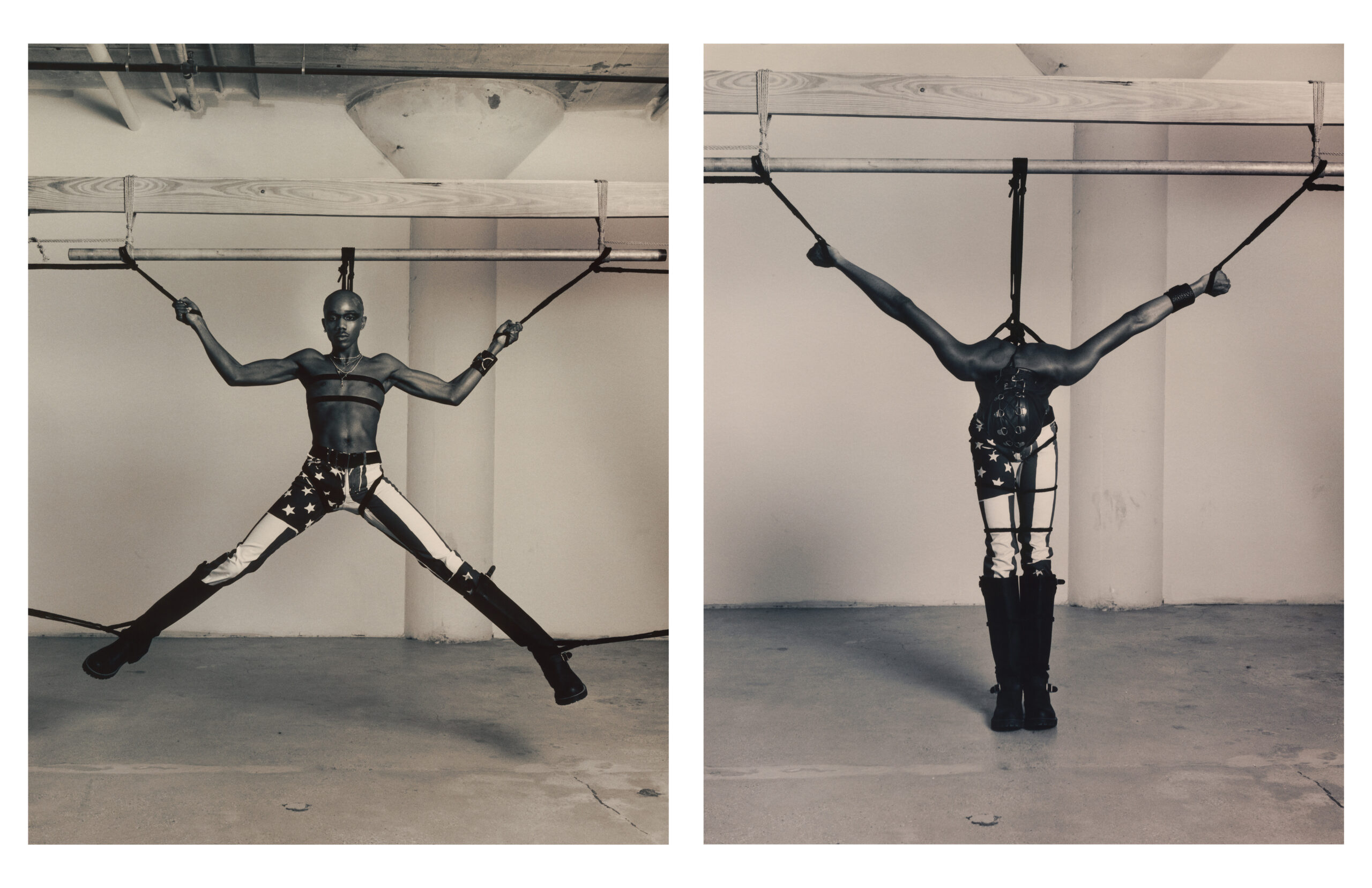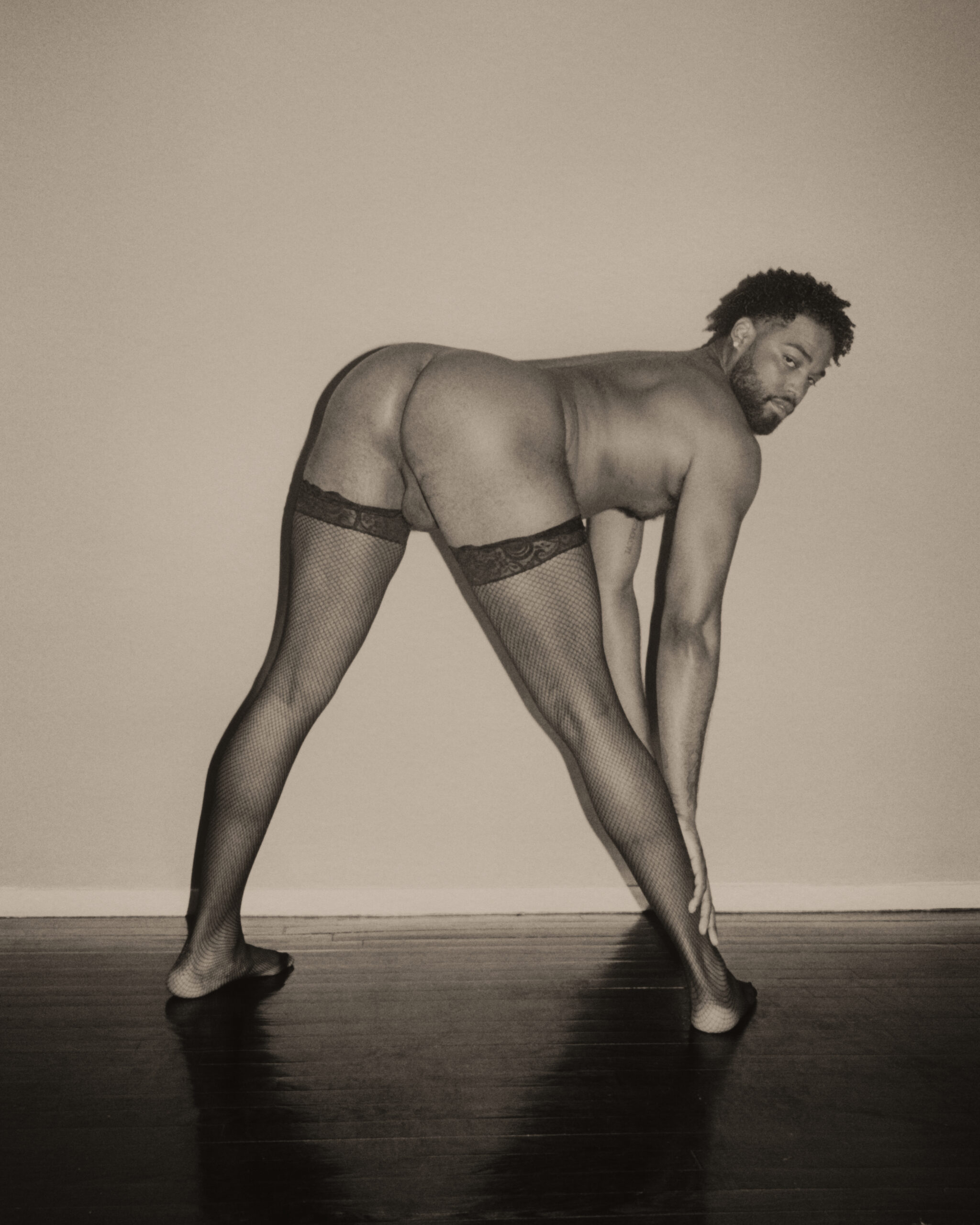
Quil Lemons is a New York based photographer rendering tender moments of Black queer masculinity in America. Lemons is already well acclaimed in the world of editorial photography. In 2021 he became the youngest photographer to shoot the cover of Vanity Fair; he’s photographed internationally known icons like Ice Spice, Billie Elish and Lorde, to name a few. Contrary to an editorial practice, which can often serve to curate the image of celebrities, Lemons’ personal work is committed to documenting OnlyFans stars just as they are, buttholes and all.
Lemons’ work has been shown at the ICP and Philadelphia Museum of Art but he recently closed his first ever solo show, Quiladelphia, at Hannah Traore Gallery on view from September 6th to December 23rd of 2023. Fortunately enough, we bumped into each other on Ludlow just as he was headed to the show and he gave me a walkthrough of the exhibit; a New York moment.
Quiladelphia, is a fantasy world built from intimate vignettes shared between Lemons and his subjects. The black and white photos mixed with whispers of patriotic imagery sets the tone for Lemons’ Black queer American Dream. The photos are completely uncensored yet completely non-exploitative. The characters of Quiladelphia are soft (literally) and vulnerable. There’s a duality that exists in this world, it’s delicate and celebratory; it’s the perfect embodiment of the intimate ‘behind closed doors’ moments one may find at a Fourth of July block party.

In the show, queer Black men occupy the white cube space in a jaw dropping and cheek-clapping kind of way; Quiladelphia functions as a modern guide to one’s exploration of queer identity and desires. The journey begins with its heroine images, two self portraits of the artist himself. Poised and bound, Lemon’s breaks the expectation of the space we expect photographers to hold. The self portraits immediately indicate the relationship between subject and photographer is not one of voyeurism; equilibrium exists. As Quil so eloquently put it, “I had to do a self-portrait or they’re gonna call me a pussy.” Lemons went on to explain that he wanted these portraits to disrupt the general hierarchy between photographer and muse. He described the experience of working with his subjects as looking at a mirror.
While the show was a spectacle in itself, it held conversation with its surroundings and the rumbling drum that is the New York City art scene did not disappoint. Serendipitously, Lemons’ show aligned with the one, Wolfgang Tillmans’ show at David Zwirner, Fold Me, New York. An exciting overlap as Lemon’s work pays homage to Tillmans visual repertoire. The two shows balanced each other well, yin and yang; Tillmans’ show turned over a new leaf in his career, exploring cityscapes and industrial textures, while Lemons’ show documented the queer individuals who comprise urban landscapes.
The subjects in Quiladelphia are celebrities of their own sort. Lemons had known of or found many of them through OnlyFans and reached out on that premise. Lemons met his subjects with automatic respect, “We had very intimate conversations and just got to know each other as people, then eventually, became friends.” Lemons continued, “ I think that a lot of people remove humanity from sex workers so it was really fun to praise people who do such a service for the queer community.” Quil went on to explain how sex workers are an integral vein of the queer community, especially in terms of education. Queer sex ed isn’t easily accessible to formative teens and let’s face it, most government funded forms of sex ed are pretty useless.

Lemons’ Americana coded visual language is a compelling element in his work. Lemons reworks iconography which represents a system that has historically excluded and underserved Black and queer folks. The inclusion of bondage materials can be read with a dual lens to represent both BDSM and the history of slavery in America. Quil plays with this imagery in a way which echoes reclamation and celebrates the contemporary narrative around Black queer masculinity in America. The relationship is subtle, it registers on a subliminal level yet, it weighs heavy when you circle the room surrounded by the work.
Lemons’ personal resonance with his subjects makes them family in his eyes. “I think we’re going to be connected for life,” Quil says, “I want to document their growth. We didn’t see a lot of gay men age because we lost so many people to HIV and AIDS.” Lemons is looking forward to showing viewers what a queer life looks like over time while we’ll wait eagerly to witness the evolution. Lemons work, while early in his career, shows great promise; I hope to see his work occupy the walls of the National Gallery one day.
Quiladelphia is a delicate dance between humanity and spectatorship. Lemons’ is carefully building a visual infrastructure which cyclically dismantles and rebuilds our notions of masculinity. This is Quil Lemons’ Black queer American dream and if you listen closely, you can hear his heartbeat.
Written by Gwyneth Giller





